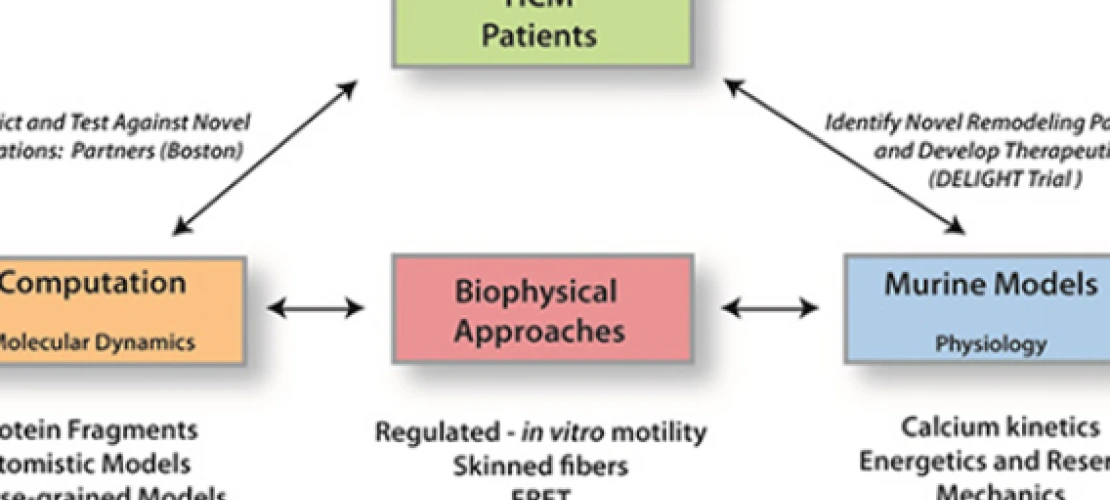Hypertrophic Cardiomyopathy is an autosomal dominant genetic disorder and is one of the most common causes of sudden cardiac death in young people. Work from our lab and others has shown that the molecular effects of independent gene mutations in sarcomeric proteins are varied and disrupt both sarcomeric function and myocellular signaling pathways leading to the complex, often progressive cardiac remodeling that characterizes HCM. While the first gene mutations linked to HCM were published over 20 years ago, many of the basic mechanisms underlying the disorder remain unknown, limiting our ability to develop specific therapeutics to alter the natural history of this not uncommon cardiomyopathy.
The cardiac thin filament is a highly ordered multisubunit machine that directly regulates the interactions between actin and the myosin motor within the sarcomere. It functions as a molecular “throttle”, directly modulating the activation and de-activation of the myofilaments in response to hemodynamic demands. Virtually all forms of HCM are noted for phenotypic heterogeneity that is likely due, in part, to the complexity of the sarcomeric structure and function. While over 1,000 mutations in components of the cardiac sarcomere have been linked to the development of HCM, in our lab we are particularly interested in the thin filament subset.
The process of linking known thin filament mutations to progressive cardioyopathic remodeling requires a broad range of techniques and experimental systems in order to study this primary biophysical disorder at multiple resolutions. Thus, while we have generated a series of cardiac-specific transgenic mouse models to evaluate the physiologic effects of mutations at the whole-heart and cellular level using ex vivo isolated hearts, measurements of Ca2+ kinetics and SR uptake we also utilize a range of biophysical techniques including the regulated in vitro motility assay, circular dichroism and skinned fiber analysis. In order to better understand the role of abnormal protein dynamics in the pathogenesis of HCM we have collaborated with the Schwartz group (U of A Chemistry) to develop an iterative, atomistic model of the cardiac thin filament that allows us to study the allosteric effects of single point mutations in individual thin filament components. Coupled to our Förster Resonance Energy Transfer (FRET) studies of fully reconstituted thin filaments we can now both predict and validate changes in structure, dynamics and Ca2+ kinetics caused by thin filament mutations linked to HCM and provide new molecular targets for intervention.
Lab Members
Jil C. Tardiff, MD, PhD
For further information, contact Jil Tardiff, MD, PhD at 520-626-8001 or
EMAIL US











